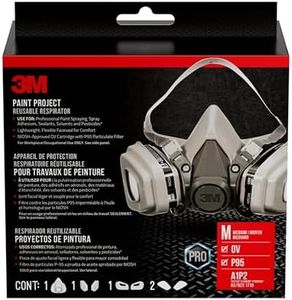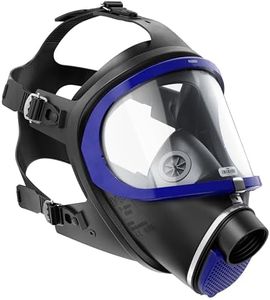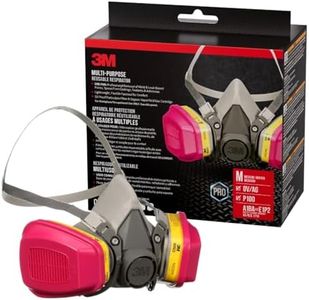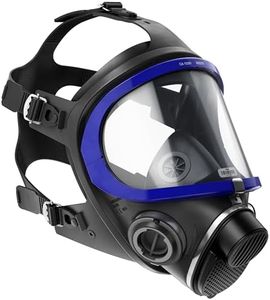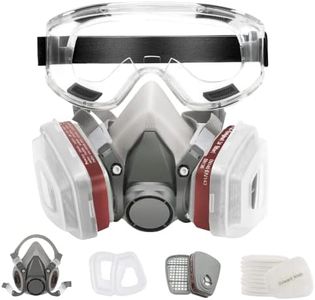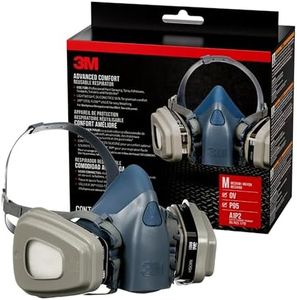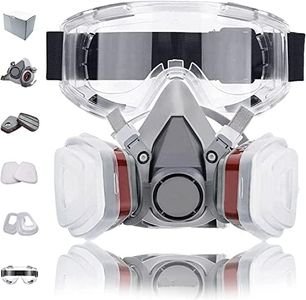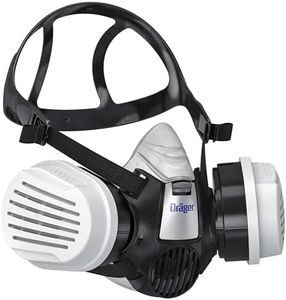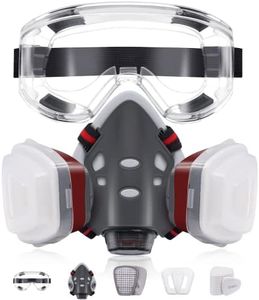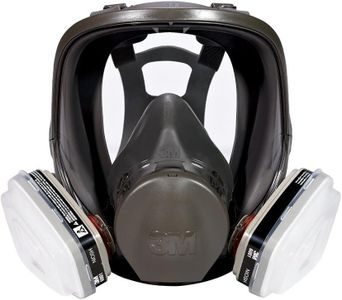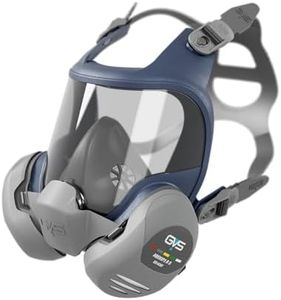We Use CookiesWe use cookies to enhance the security, performance,
functionality and for analytical and promotional activities. By continuing to browse this site you
are agreeing to our privacy policy
10 Best Respirator For Mold Removal
From leading brands and best sellers available on the web.Buying Guide for the Best Respirator For Mold Removal
Choosing a respirator for mold removal is crucial for your safety and health. Mold spores can be hazardous when breathed in during cleaning and removal, so using the right respirator protects your lungs and prevents potential long-term health issues. When picking a respirator, it's important to understand key features so you select one that matches the level of exposure, your comfort, and the duration of use. Whether you're cleaning a small spot or handling a large contaminated area, these specs will help you make an informed decision.Type of RespiratorThe type of respirator refers to its design and intended level of protection. For mold removal, the most common types are disposable masks and reusable half-face or full-face respirators. Disposable respirators are usually lightweight and good for short, simple tasks, but may not provide a tight seal. Reusable models, particularly half-face and full-face respirators, provide a better fit and can be used multiple times with the right filters. If your job involves small surface cleaning or a quick fix, a disposable mask may suffice. For larger or more heavily contaminated areas, especially if you'll be working for a longer period, opt for a reusable respirator for improved safety and comfort.
Filter Type (P100/N100)The filter determines what the respirator protects you from. For mold, a filter rated as P100 or N100 is recommended; these trap at least 99.97% of airborne particles, including very fine mold spores. Lower-rated filters (such as N95) block 95% of particles but may let more spores slip through. Pick a P100 or N100 filter if you're working in spaces with heavy mold growth or if you want the highest possible protection. For minimal and occasional exposure, N95 can offer basic protection, but higher ratings are always safer for mold remediation.
Fit and SealFit and seal refer to how well the respirator hugs your face to prevent leaks. If a respirator doesn't form a proper seal, unfiltered air–and mold spores–can sneak in. Some respirators come in different sizes or have adjustable straps to help you get a better fit. When choosing, always make sure the mask sits snugly around your nose, mouth, and, for full-face versions, your eyes. For the best protection, especially if you'll be moving around a lot or working in tight spaces, prioritize a model that you can easily adjust and test for leaks.
Comfort and BreathabilityComfort and breathability refer to how easy and pleasant the respirator feels to wear for long periods. Some respirators have soft cushioning, ergonomic shapes, and vents or valves that help you breathe more easily and reduce heat buildup inside. If you expect to work for more than a few minutes at a time, pick a model with padding and airflow features. Try on different designs, if possible, to see which works best with your face shape and won't cause discomfort during extended use.
Maintenance and ReusabilityMaintenance and reusability describe how often the respirator can be cleaned and reused. Disposable masks are single-use and meant to be thrown away after being worn, while reusable models can be cleaned and fitted with new filters as needed. If you're doing ongoing mold removal projects or want to keep your gear ready for future use, choose a reusable respirator. Make sure you follow cleaning and filter replacement instructions to maintain its protective qualities over time.
